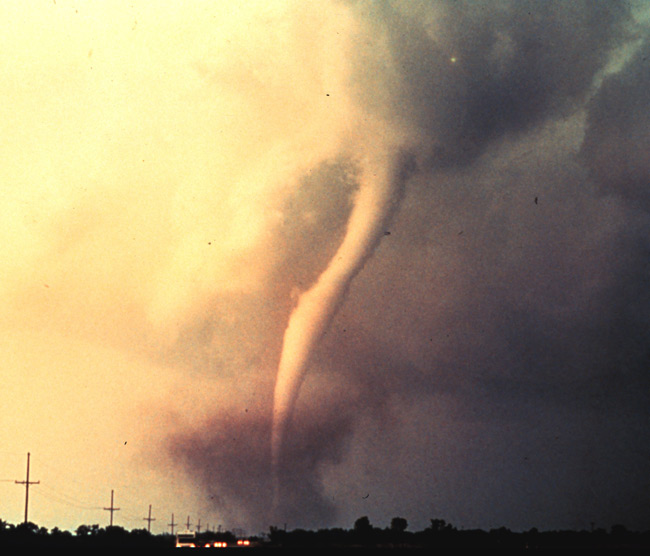Natural Disasters - Tornado
A tornado results from a thunderstorm. They are violent,
rotating columns of air blown between 50 and 300+ mph.
Tornado's are usually in the shape of a funnel with a narrow end.
They are extremely destructive. The word tornado comes from
the Spanish word 'turned' which came from the Latin word torqueo
which means 'twist'.
Tornadoes normally rotate anticlockwise in the northern
hemisphere.
Tornados are formed where warm moist air meets cold air meets dry
air. These circumstances don't always produce tornados
though.
Most tornadoes last for less than 10 minutes.
There is an F scale to work out the significance of the Tornado.
A tornado sounds like a close by train: with a continuous rumble.
Some tornadoes produce a loud whooshing sound.
Examples:
 |
|
Tornadoes can cause serious damage, injury or
death. One should always heed official watches and warnings. |
 |
|
Union City, Oklahoma tornado (1973) |
|


0 comment/s:
Post a Comment